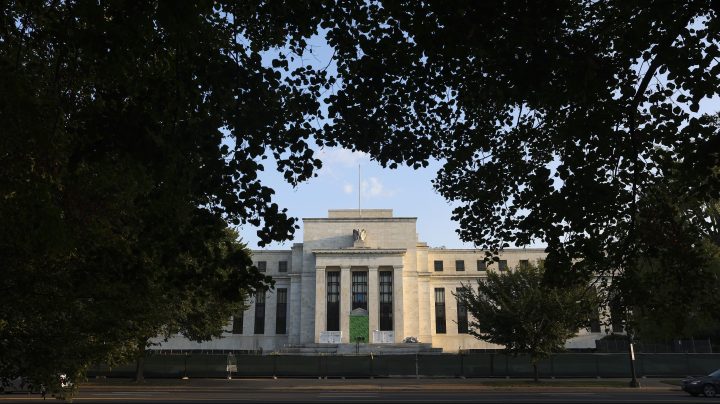
How long does it take for Fed rate hikes to work?

On Friday, the Bureau of Economic Analysis released the core personal consumption expenditures index for September, or core PCE for short. Remember, the core PCE is the Federal Reserve’s preferred inflation measure, partly because it excludes bouncy food and energy prices.
The takeaway? Well, month-over-month price levels in September rose 0.5%. Which is also how much it rose in August. And also pretty close to how much it rose in May and June.
As we’ve talked about before, there’s a time lag between the Fed’s raising interest rates and inflation actually coming down. But just how long should we expect to wait?
To answer that, how about an analogy? The U.S. economy right now is kinda like an 8-year-old with an ear infection.
“When kids get amoxicillin for an infection, there’s still that first 12 to 24 hours where they still feel miserable, and there’s not much you can do about it,” said Julie Smith, an economist at Lafayette College in Pennsylvania.
In this comparison, the ear infection is inflation and the amoxicillin is the Fed raising rates. But Chair Jay Powell’s medicine works more slowly than 12 to 24 hours. “Most people would say a year to 18 months,” Smith said.
That’s economists’ best guess, and they’re guessing because raising rates is an inherently indirect way to stabilize prices.
You can already see the impact of the Fed’s hikes in mortgage rates and the strong dollar, said Bill English at the Yale School of Management.
“But those effects on spending take a little while to actually happen,” he said. “People have habits, people have plans that they don’t change. “
Just how long it takes to happen will depend on the still very tight labor market — which the Fed wants to loosen.
But after two years of a labor shortage, employers may not be very accommodating, according to Bank of America’s Michael Gapen.
“If you’re an employer and it’s taken you years to hire empty spaces, you may not be so quick to let go of labor in any downturn,” he said.
Still, Gapen expects inflation to return to more manageable levels next year. Come March, it’ll be 12 months since the Fed started raising rates.
There’s a lot happening in the world. Through it all, Marketplace is here for you.
You rely on Marketplace to break down the world’s events and tell you how it affects you in a fact-based, approachable way. We rely on your financial support to keep making that possible.
Your donation today powers the independent journalism that you rely on. For just $5/month, you can help sustain Marketplace so we can keep reporting on the things that matter to you.

















